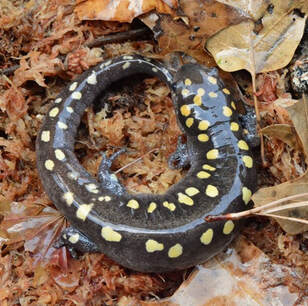 Photo by Tom Earnhardt Photo by Tom Earnhardt Populations of the world’s wild animals have fallen by more than 50 percent in recent decades and humanity is to blame. The popular news magazine, THE WEEK, reported on February 22, 2019, that the swelling human population (now 7.5 billion and mushrooming) has already had devastating impacts on the Earth’s wildlife. We’ve driven thousands of species to the edge of extinction through habitat loss, overfishing and hunting, trophy animal collection, introduction of harmful invasive species, toxic pollution, and climate change. Over the past 40 years, the number of wild animals–mammals, birds, reptiles, amphibians, insects, and marine life–have plunged by 50 percent. The World Wildlife Fund (WWF) estimates that populations of higher-order vertebrate animal species have decreased by an average of 60 percent since 1970. <<continued . . .>> And for some species, population declines have been even more catastrophic. For example, there has been a 90 percent population plunge (about 900 million) in monarch butterflies in America. Only 3 percent of the heavily-fished Pacific bluefin tuna remain. Ocean reefs and all the species composing reef life (constituting about 25 percent of all marine life) have in recent decades declined by 50 percent and may be entirely destroyed in the next 30 years. WWF executive director Mike Barrett observes, “We are sleepwalking toward the edge of a cliff.”
We don’t really know the total number of species on Earth, let alone how many species are already extinct. Only a fraction of the Earth’s animal and plant species are known. Among better known vertebrate animal species, scientists conclude that at least 338 species have gone extinct and 617 vertebrate species are now “extinct in the wild” or “possibly extinct.” But 99 percent of the Earth’s animal species are invertebrates, and their survival is in even greater jeopardy. The International Union for Conservation of Nature (IUCN) counts 26,500 species threatened with extinction: 40 percent of amphibian species, 25 percent of mammals, 14 percent of birds, and worse for marine species on the verge of extinction. Recent studies indicate that a third of the Earth’s insects are endangered, with the total numbers of insects dropping by about 2.5 percent EVERY YEAR. Mass extinction is underway. Scientists define mass extinction as an epoch of time when at least 75 percent of all species vanish from our planet. The previous five mass extinctions occurred over the past 450 million years, with the last one happening when a massive asteroid hit the Earth and wiped out dinosaurs and most other living species, about 66 million years ago. Now we humans are the principal culprit causing the current and sixth mass extinction of life on our planet. Current extinction rates have climbed to somewhere between 100 to 10,000 times faster than Mother Nature’s regular pace of species evolution and extinction. The negative consequences are enormous. Extensive loss of species can have catastrophic effects on the food chain, on ecosystems’ support systems, on pollination of plants (including our food crops). “This is far more than just being about losing the wonders of nature, desperately sad though that is,” says WWF’s Barret. “This [mass extinction] is actually now jeopardizing the future of people. Nature is not ‘nice to have’—it is our life-support system.” --Chuck Roes, SCP President
3 Comments
|
When we see land as a community to which we belong, we may begin to use it with love and respect.... Conservation, viewed in its entirety, is the slow and laborious unfolding of a new relationship between people and land." There is in fact no distinction between the fate of the land and the fate of the people. When one is abused, the other suffers. From the PresidentSCP President Chuck Roe looked at land conservation along the route of John Muir's "Southern Trek." About ViewpointThis blog offers views of our Board and partners. We invite your viewpoint on the following questions: Archives
April 2024
Categories
All
|

 RSS Feed
RSS Feed